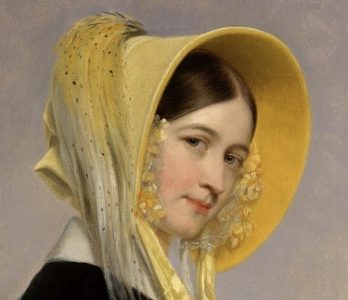![Screenshot_2018-12-17 2016_NYR_12147_1344_000(reuven_rubin_harvest_near_jerusalem) jpg (JPEG Image, 3200 × 2349 pixels) - S[...]](https://atsunnyside.blog/wp-content/uploads/2018/12/Screenshot_2018-12-17-2016_NYR_12147_1344_000reuven_rubin_harvest_near_jerusalem-jpg-JPEG-Image-3200-×-2349-pixels-S....jpg)
Distinctively Israeli
Reuven Rubin (1893-1974) is the eighth of 13 children born to a Romanian Jewish Hasidic family in Galaţi. Rubin studies art at Bezalel Academy of Art in Jerusalem and Ecole des Beaux Arts and Academie Colarossi in Paris.
“Although born in Romania and trained in art
in Paris and Romania, Reuven Rubin …
is a distinctly and distinctively Israeli artist.”
![kScreenshot_2018-12-17 Screenshot_2018-12-17-2016_NYR_12147_1344_000reuven_rubin_harvest_near_jerusalem-jpg-JPEG-Image-3200-[...]](https://atsunnyside.blog/wp-content/uploads/2018/12/kScreenshot_2018-12-17-Screenshot_2018-12-17-2016_NYR_12147_1344_000reuven_rubin_harvest_near_jerusalem-jpg-JPEG-Image-3200-....jpg)
Rubin Links Continents and Cultures
Although he spends his life traveling between Romania, Paris, New York, and Israel, Engel Gallery explains Rubin’s importance to Israel:
“Reuven Rubin is a central figure in the canon of Israeli art, who [succeeds] in defining modern Eretz Israel’s visual essence, famed both in Israel and abroad. When he first set foot in Eretz Israel, Rubin’s dream [is] to create art which will link between European and Asian art, ancient Jewish and biblical folklore.” (Engel Gallery)
Click For Enlarged Detail

















“Reuven Rubin is a central figure
in the canon of Israeli art…”
In Summary
Reuven Rubin wants “to create art which will link between European and Asian art, ancient Jewish and biblical folklore.” (Engel Gallery). Most importantly, Rubin succeeds in forging an indigenous style of art by combining his early Primitivism of the 1920s with both Byzantine art and the modernist styles of Paul Gauguin and Henri Rousseau. This alloy of ideas emerges as the ‘Eretz-Yisrael’ style, featuring recurring themes of the biblical landscape, folklore, and people – Yemenite, Hasidic Jews, and Arabs. For these reasons Rubin is called “distinctly and distinctively [an] Israeli artist.” (JVL)
Although the image quality is poor and the audio is without translation, the video Rubin – The Palette of A Poet Year: 1966 is worth watching for the many clips of Rubin working in the settings he immortalized in his paintings. From this video I glimpsed many of his magnificent works of art not available for viewing in other online venues. Seeing this hint of the true scope of his work explains better than any other source why Reuven Rubin “is a central figure in the canon of Israeli art.” (Engel Gallery)
Video
Rubin – The Palette of A Poet Year: 1966
Duration: 00:12:46 Language: Hebrew Abstract: The life and work of artist Reuven Rubin. Hebrew University of Jerusalem, Music: Vivaldi : Concerto for 2 Flutes, 2 Salmoe, 2 Violins, 2 Mandolin by Claudio Scimone & I Soliste Veneti.
Sources
Jewish Virtual Library, Reuven Rubin, https://www.jewishvirtuallibrary.org/reuven-rubin (accessed 5 Dec 2018).
Engel Gallery, Reuven Rubin Biography, http://www.engel-art.co.il/artists.php?act=show&id=1033,(accessed 5 Dec 2018).
![iScreenshot_2018-12-17 7Screenshot_2018-12-17-2016_NYR_12147_1344_000reuven_rubin_harvest_near_jerusalem-jpg-JPEG-Image-3200[...]](https://atsunnyside.blog/wp-content/uploads/2018/12/iScreenshot_2018-12-17-7Screenshot_2018-12-17-2016_NYR_12147_1344_000reuven_rubin_harvest_near_jerusalem-jpg-JPEG-Image-3200....jpg)
Thanks for Visiting! 🙂
~Sunnyside

Oh my goodness, I love that! Certain sections remind me of Japanese Brush Painting, particularly the representation of the town … and I love the little goats. 🙂
LikeLiked by 1 person
I’m so glad you like this, ellem! I LOVE Japanese Brush Painting and could spend hours looking at details online. This one reminds me of them, too. Thanks for visiting! ❤️😎
LikeLiked by 1 person
Super interesting ! Never knew so much details about him or his style – wow thank you
LikeLiked by 1 person
I wish I could understand the Hebrew language in the film….he is interesting to me, too. Thanks for commenting, Luda. 😊
LikeLiked by 1 person
❤️👍🏻👍🏻🤗👍🏻👍🏻❤️
LikeLiked by 1 person
❤️😎
LikeLiked by 1 person